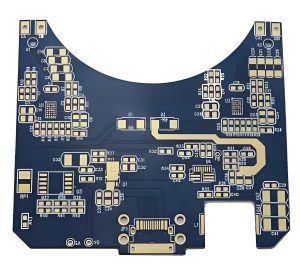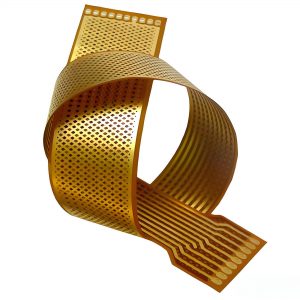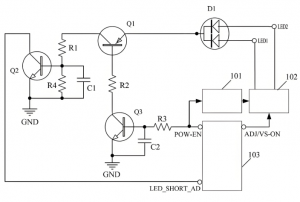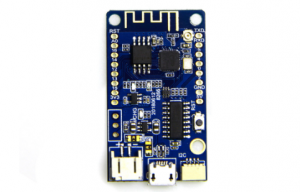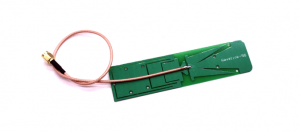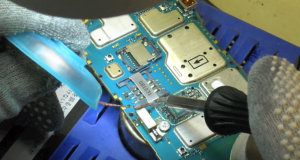When designing or selecting a PCB board, thickness is a key consideration. The most common thicknesses are 1.2mm and 1.6mm PCB, but which one is right for you? Each has its advantages depending on the application. Whether you’re designing for compact devices, high-power applications, or something in between, choosing the right PCB thickness will impact performance, cost, and durability.
In this blog, we’ll compare the two most popular thicknesses—1.2mm and 1.6mm—and explore their key differences. We’ll help you understand why most PCBs are 1.6mm thick, when to consider 1.2mm PCBs, and what factors to keep in mind during your decision-making process.
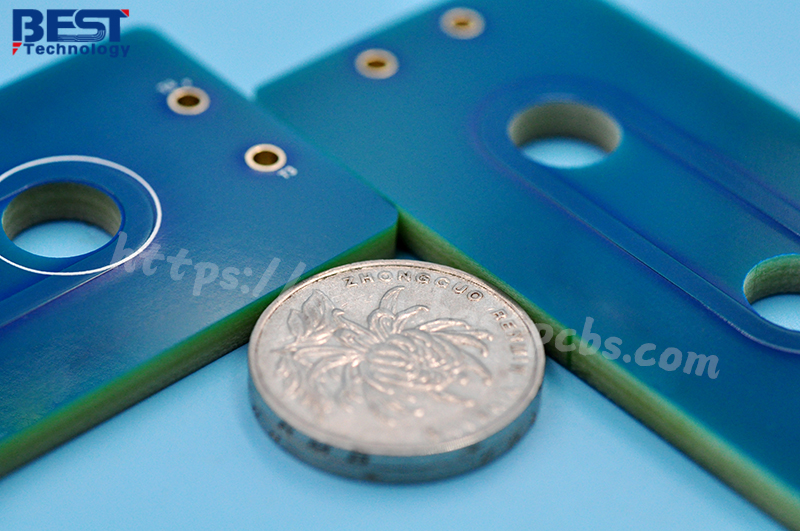
Why are PCBs 1.6mm Thick?
The 1.6mm thickness has become the standard for most PCBs. But why is this the preferred thickness? One reason is historical—it was a size that worked well for manufacturing processes when PCBs were first developed. Over time, this became the norm due to its balance between durability and flexibility.
From the perspective of process and cost, the thinner the PCB board, the higher the manufacturing cost. Because it is necessary to use higher levels of materials and more refined processes to meet the various requirements of PCB boards in the manufacturing process. At the same time, PCB boards that are too thin are also susceptible to environmental and mechanical forces and have poor stability. Therefore, under the premise of taking into account cost and stability, 1.6mm has become a more common PCB board thickness.
Secondly, from the perspective of compatibility and standardization, in the vacuum tube era, because the development and manufacturing of PCB substrates have not yet achieved industrial production, PCB board thickness is mainly determined according to the equipment housing/installation hardware or the required PCB board thickness. At that time, the 1.6mm specification gradually became the industry standard and provided compatibility and convenience for later PCB manufacturing and design.
In addition to 1.6mm, there are some other common PCB board thickness, such as 0.8mm, 1.0mm, 1.2mm, 2.0mm and so on. These thicknesses are usually selected based on specific application and design requirements.
For example, in the field of communications, the commonly used PCB board thickness is generally 0.8mm; In the field of consumer electronics, the commonly used PCB board thickness is generally 1.0mm. In addition, for some specific applications, you can also choose other non-standard thickness options, such as 0.4mm, 0.6mm, 2.4mm, etc.
How Thick is a 1.2mm PCB?
Compared to the standard 1.6mm, a 1.2mm PCB is thinner, which makes it ideal for compact designs where space is at a premium. The 1.2mm thickness reduces the overall weight of the PCB, which can be critical in devices like smartphones, wearables, and other portable gadgets.
Despite being thinner, 1.2mm PCBs can still provide good mechanical support and electrical performance, though they might not be as resistant to bending or mechanical stress as their thicker counterparts. This makes them better suited for applications that do not require heavy-duty handling or exposure to harsh environments.
1.2mm vs. 1.6mm PCB
So, how do you decide between a 1.2mm and a 1.6mm PCB? It depends on the specific needs of your project. Here are some factors to consider:
- Mechanical Strength
A 1.6mm PCB is more rigid and can withstand greater mechanical stress, making it ideal for larger devices or environments where the board may face pressure or force. If your design requires a sturdy board, 1.6mm is a better option.
- Compact Design
For smaller, more compact devices, a 1.2mm PCB can save valuable space and reduce the overall profile. This is especially important for handheld gadgets or portable electronics where size and weight matter.
- Thermal Management
Thicker boards like the 1.6mm version have better thermal management properties, as they can dissipate heat more efficiently. If your PCB will handle high power or generate a lot of heat, the 1.6mm option may be a better fit.
- Cost
While the difference in cost between 1.2mm and 1.6mm PCBs is usually minimal, thinner boards might be slightly more cost-effective, especially for large-volume production. However, always weigh this against the performance needs of your application.
Ultimately, the decision comes down to the balance between durability, size, and the operating environment of your product.
Is Thinner PCB Better?
A thinner PCB, like the 1.2mm version, can be better in certain applications, but it’s not universally superior. The key benefit is the reduced thickness, which translates to lighter and more compact products. This is why thinner PCBs are favored in modern consumer electronics where every millimeter counts.
However, thinner PCBs are less rigid, making them more prone to bending or warping under pressure. If the PCB is subjected to mechanical stress or has to endure rough handling, a 1.6mm thickness might be the safer choice.
For low-stress applications, such as small gadgets or tightly packed devices, a 1.2mm PCB can offer the perfect balance of performance and size. The goal is to match the thickness to the demands of your specific project.
What is the Tolerance of a 1.6mm PCB?
PCB manufacturers often specify tolerances to account for minor variations in thickness during production. For a 1.6mm PCB, the typical tolerance range is around ±0.10mm, though this can vary based on the manufacturer and specific requirements of the project.
Tolerances are crucial in ensuring that the PCB fits within the required mechanical constraints of the final product. When designing a product, it’s essential to account for this tolerance, especially if your design requires exact thickness dimensions.
The tolerance of a 1.6mm PCB helps ensure consistent performance, even with minor deviations in the manufacturing process.
How Thick is a Standard 2-Layer PCB?
A standard 2-layer PCB typically ranges from 1.6mm to 2.4mm in thickness. However, 1.6mm is the most common thickness for 2-layer boards used in a wide range of applications.
The two layers refer to the copper traces that are used for electrical connections, and the thickness of the board itself determines its strength, thermal properties, and overall performance. In most cases, a 1.6mm thickness offers an ideal balance for general use, providing both durability and flexibility in terms of design and assembly.
How to Choose a Suitable PCB Thickness?
When choosing the thickness of a PCB, several factors need to be considered:
1. Weight
Weight is a key factor. Thinner boards tend to be more fragile and are more likely to break. Therefore, if lightweight is not a strict requirement, thicker boards are usually the better choice.
2. Flexibility
Flexibility is another important consideration. Thinner boards are generally more flexible, but they are also more prone to breaking. Thicker boards offer less flexibility but provide greater stability.
3. Space
The amount of space available in your device is crucial when deciding on PCB thickness. If your device has enough room to accommodate a thicker PCB, then using a thicker board is advisable. On the other hand, if the device is compact, a thinner PCB may be necessary to fit into the available space.
4. Type of Connectors and Components
The type of connectors and components you plan to use also influences the PCB thickness. Different components may have specific requirements that determine the board’s thickness.
5. Dimensions and Design
When selecting PCB thickness, factors such as the dimensions of the PCB, the number of layers, the weight of the installed components, the installation method, and impedance should all be considered. A general rule of thumb is: when the aspect ratio of the PCB (length to width) is not greater than 2 and the width-to-thickness ratio is not greater than 150, the performance is optimal. The width here refers to the smaller dimension between the depth or height of the PCB.
For plug-in boards mounted in vertical boxes, the thickness should fully consider deformation issues. For PCBs that are not box-mounted, if the size is smaller than 300mm x 250mm, 1.6mm to 2mm thick boards are preferred. Larger PCBs should use 2mm, 2.4mm, 3mm, 3.2mm, 3.5mm, or even thicker boards, but it is best to avoid exceeding 4mm.
6. Copper Thickness, Layers, and Signal Type
When determining the PCB thickness, you should also factor in the copper thickness, the material of the board, the number of PCB layers, the types of signals it will carry, and the type of through-holes being used. The operating environment is another key consideration.
PCB Manufacturing Considerations
Several manufacturing factors also influence the final PCB thickness:
- Drilling equipment capability
- Copper thickness
- Number of layers
- Board cutting method
For non-standard thickness PCB designs, additional factors include:
1. Manufacturer Capability
The first consideration is whether your PCB manufacturer has the equipment and capability to produce the specific thickness you need. This decision should be made early in the design process, along with other Design for Manufacturing (DFM) requirements. Otherwise, you may need to make changes and redesign your PCB stack-up.
2. Extended Delivery Time
If your manufacturer does not stock the materials required for non-standard thickness, it could delay the production timeline. Therefore, it’s essential to consider the delivery time when choosing a non-standard thickness.
3. Additional Costs
This is perhaps the most important point: you need to evaluate the cost of special materials, additional manufacturing costs, and the potential impact of delayed delivery to determine if the extra expenses are justifiable.
Opting for standard PCB thicknesses typically results in faster production and lower costs. However, if you decide on a non-standard thickness, it’s crucial to communicate with your manufacturer early in the design phase. This ensures that they can meet your requirements, and you’ll also need to clarify lead times and any additional manufacturing costs.
FAQs
Q1: Can I customize the thickness of my PCB?
Yes, many manufacturers offer custom thickness options ranging from thinner boards like 0.8mm to thicker boards over 2.4mm, depending on your needs.
Q2: What are the benefits of a 1.2mm PCB?
A 1.2mm PCB offers space-saving advantages, making it ideal for compact devices like smartphones and wearables. It also tends to be lighter.
Q3: Will a 1.2mm PCB be more flexible?
Yes, thinner PCBs are more flexible, which may be useful in specific applications where slight bending is acceptable.
Q4: Why is thermal management important in PCB design?
Proper thermal management prevents overheating and ensures the long-term reliability of the PCB, especially in high-power applications.
Q5: What is the standard thickness tolerance for a PCB?
The standard tolerance is usually around ±0.10mm, but this can vary depending on the manufacturer and board specifications.



